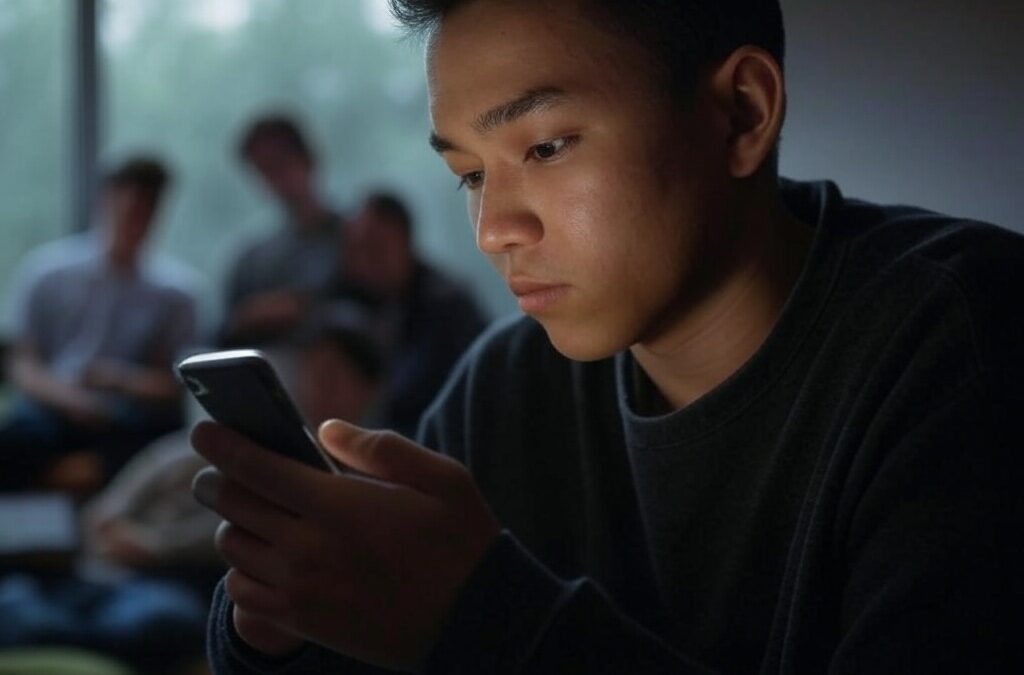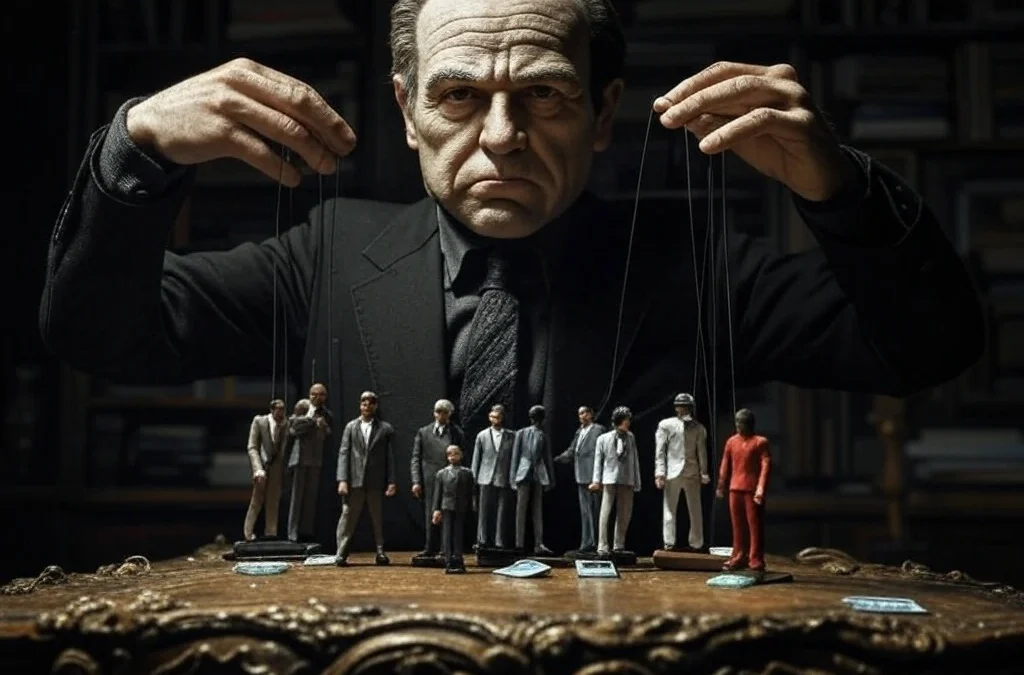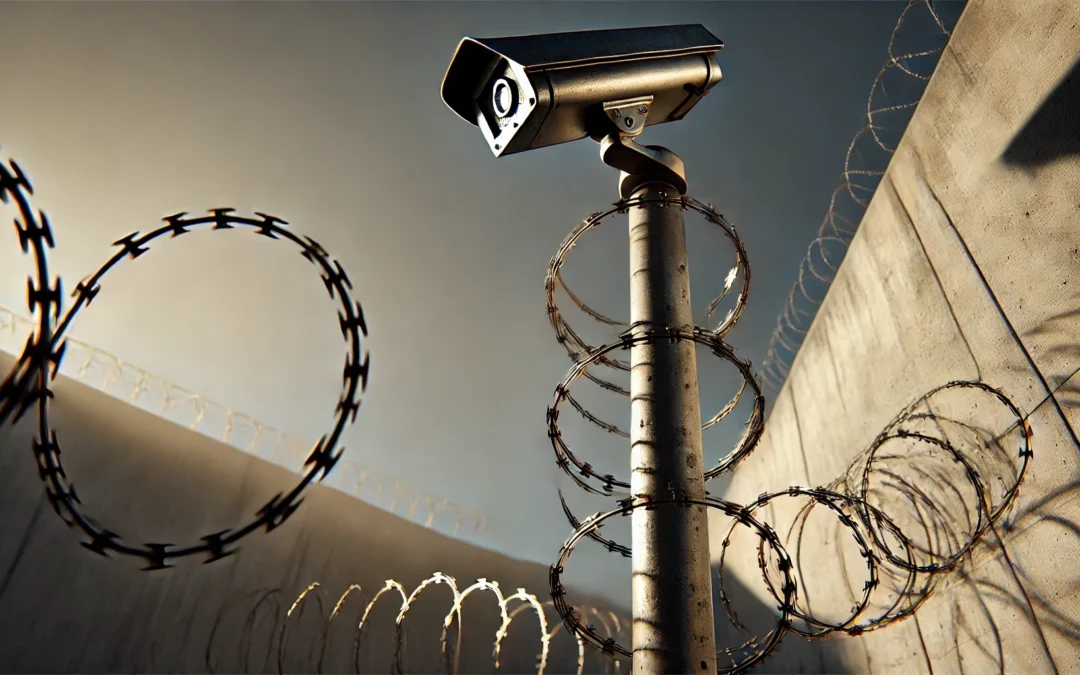Imagine a world where your every move is monitored, and even a casual conversation could land you in trouble with the authorities. This might sound like something out of a dystopian novel, but for millions of people around the globe, it’s a reality they face every day. A police state is a government system where the authorities have an excessive level of control over the lives of citizens, often through constant surveillance, strict laws, and limited personal freedoms. Understanding what a police state looks like can help us appreciate the freedoms we often take for granted and recognize the warning signs when governments overreach.
In this article, we’ll explore 30 real-life examples of police states, past and present, to see how they operate and the impact they have on the lives of ordinary people. From the infamous surveillance practices in East Germany’s Stasi era to modern-day China with its extensive use of technology to keep tabs on citizens, these examples shed light on how power can be used to control and suppress. By looking at these cases, we can better understand the importance of protecting our freedoms and staying vigilant against any erosion of our rights. These stories serve as reminders of the delicate balance between security and liberty that every society must navigate.
What is a Police State?
A police state is a form of governance where authorities maintain strict and pervasive control over society through the extensive use of police and security forces. In such systems, the government prioritizes maintaining power and suppressing dissent over protecting individual freedoms and rights. Hallmarks of a police state include constant surveillance, restricted civil liberties, and the arbitrary enforcement of laws. Citizens may find themselves monitored through advanced technology, subjected to censorship, and vulnerable to detention without due process.
In a police state, the rule of law is often undermined, and security forces operate with little oversight or accountability. Fear and intimidation are commonly used tools, creating a society where people are hesitant to express opinions or challenge authority. Such regimes are typically marked by centralized power, limited transparency, and widespread human rights abuses. Understanding the characteristics of a police state is crucial to recognizing how unchecked authority can erode freedom and democracy.
The Best Examples of a Police State
Throughout history and in modern times, police states have taken many forms. Below are 30 examples that reveal how governments have used surveillance, control, and fear to dominate their populations and suppress freedoms. Each case offers a unique perspective on what life under a police state looks like.
1. North Korea
North Korea is often cited as a textbook example of a police state. The government tightly controls every aspect of citizens’ lives. Surveillance is everywhere. People are required to show loyalty to the ruling regime, and dissent is met with severe punishment. Many defectors have shared stories of how even private conversations can lead to arrest if overheard. The constant fear of being monitored is a hallmark of a police state.
2. Nazi Germany
Under Adolf Hitler, Nazi Germany was a classic example of a police state. The Gestapo (secret police) had unchecked authority to arrest, imprison, and even execute those deemed threats to the state. Surveillance was pervasive, and citizens were encouraged to report each other. This created a society full of fear and mistrust. The police’s role was to enforce the regime’s ideology rather than protect citizens’ rights.
3. United Kingdom under Keir Starmer
The UK, once a symbol of freedom dating back to the Magna Carta in 1215, has shown signs of police-state behavior under recent governance. Reports of individuals being jailed for participating in anti-immigration protests or posting controversial opinions on social media have raised alarms about freedom of expression. The widespread use of CCTV surveillance makes the UK one of the most monitored nations globally, while restrictions on cash payments create additional layers of control. These examples highlight that even historically free nations can drift toward tyranny if vigilance is lost.
4. Soviet Union under Stalin
Joseph Stalin’s Soviet Union is another well-known police state. The government controlled speech, media, and even thought. The secret police, known as the NKVD, used torture and forced confessions to suppress dissent. Millions were sent to labor camps or executed during purges. The people lived in constant fear of being accused of disloyalty, even without evidence.
5. East Germany
The German Democratic Republic (East Germany) during the Cold War was infamous for its surveillance state. The Stasi, the secret police, employed a vast network of informants, including neighbors and family members. Ordinary activities, like meeting friends or sending a letter, could lead to scrutiny. Many lived in paranoia, unsure who they could trust.
6. China’s Xinjiang Region
In China’s Xinjiang region, the government uses advanced technology to monitor the population, particularly the Uyghur Muslim minority. Cameras, facial recognition, and phone tracking are used to keep people under constant surveillance. Reports of detention camps and forced indoctrination highlight how far the government will go to maintain control. It’s a modern example of how technology can enforce a police state.
7. Apartheid South Africa
During apartheid, South Africa was a police state for its Black majority population. Laws and security forces worked together to oppress non-white citizens. Movement, employment, and even personal relationships were strictly controlled. Protests were met with brutal crackdowns, including imprisonment and violence. This police state was built on racial segregation and oppression.
8. Cambodia under Pol Pot
Pol Pot’s regime in Cambodia was marked by intense control and violence. The Khmer Rouge government targeted intellectuals, artists, and anyone perceived as a threat. Millions were forced into labor camps. The secret police ensured total obedience. Fear ruled the land, with individuals constantly under suspicion of betraying the regime.
9. Myanmar Military Rule
Myanmar has experienced periods of harsh military rule, where freedom of speech and assembly were heavily restricted. Security forces frequently used violence against protestors and activists. The military’s control over the judiciary ensured that dissenters faced severe consequences. Even in recent years, reports of crackdowns have highlighted the persistence of police-state tactics.
10. Russia under Putin
Russia under Vladimir Putin has increased its control over media, protests, and political opposition. Protesters face arrest, and opposition leaders are frequently silenced through legal and extrajudicial means. Advanced surveillance systems, such as facial recognition in public spaces, have been used to identify and track dissidents. This centralization of power reflects key features of a police state.
11. Chile under Pinochet
During Augusto Pinochet’s rule in Chile, the government used security forces to silence opposition. Thousands of people were detained, tortured, or disappeared. The secret police operated with impunity, creating an atmosphere of constant fear. This period demonstrates how a police state uses terror to suppress political dissent and maintain power.
12. Belarus under Lukashenko
Belarus, under President Alexander Lukashenko, shows many traits of a police state. The government uses security forces to suppress protests and arrest opposition leaders. State-controlled media spreads propaganda to maintain control. Many citizens report living in fear, knowing that any criticism of the government could lead to surveillance, arrest, or imprisonment. Human rights organizations frequently document cases of torture and abuse.
13. Italy under Mussolini
Benito Mussolini’s fascist Italy exemplified a police state driven by ideology. The regime used secret police to crush political opponents and control the population. Public demonstrations against the government were outlawed, and surveillance ensured citizens remained loyal. The intense focus on maintaining absolute power left no room for dissent.
14. Zimbabwe under Mugabe
During Robert Mugabe’s rule, Zimbabwe became a police state in many ways. Political opposition was not tolerated, and the police acted as enforcers of the regime. Elections were rigged, and those who spoke out risked beatings, arrests, or worse. Many citizens lived in fear of being targeted for even small acts of defiance, such as attending an opposition rally.
15. The Philippines under Marcos
During Ferdinand Marcos’ rule, martial law transformed the Philippines into a police state. Civil liberties were suspended, and security forces were given unchecked powers. Thousands of activists, journalists, and political opponents were imprisoned or killed. Fear of state reprisal became a defining aspect of everyday life under his regime.
16. Pakistan under Zia-ul-Haq
General Zia-ul-Haq’s military regime in Pakistan introduced laws and policies that restricted freedoms. Martial law gave police and military personnel sweeping powers to detain and punish dissenters. Strict religious laws were imposed, and anyone accused of defying them faced harsh consequences. The lack of basic freedoms during this era left a lasting impact on the country.
17. Uganda under Idi Amin
Idi Amin’s regime in Uganda was notorious for its violence and control. The secret police, known as the State Research Bureau, operated with unchecked authority. They terrorized citizens through arbitrary arrests, torture, and executions. People feared speaking out, knowing that even rumors of dissent could lead to death. Amin’s rule became a symbol of a police state gone to extremes.
18. Hungary during Soviet Control
When Hungary was under Soviet influence, the state used secret police to maintain control. The ÁVH (State Protection Authority) spied on citizens, tapped phones, and infiltrated communities. People learned to stay quiet and avoid drawing attention to themselves. Informants were everywhere, creating an atmosphere of mistrust among friends and family.
19. Turkmenistan
Turkmenistan is one of the most repressive countries in the world today. The government monitors its citizens through extensive surveillance and controls nearly all aspects of life. Independent media is banned, and access to the internet is highly restricted. Citizens are often forced to show loyalty to the president, and critics risk imprisonment or torture.
20. Chile under the Spanish Colonial Rule
During Spanish colonial rule, Chile experienced early examples of police-state behavior. Indigenous populations and locals opposing colonial power faced brutal crackdowns. Surveillance networks, though less sophisticated than today, kept the populace under constant watch. The suppression of basic rights foreshadowed many modern police-state tactics.
21. Bahrain
Bahrain has been accused of using police-state methods, especially after the 2011 Arab Spring protests. The government used heavy-handed tactics to suppress demonstrations, including mass arrests and torture. Activists, journalists, and opposition figures are frequently targeted. Surveillance of online and offline activities is extensive, making it difficult for citizens to express dissent.
22. Vietnam
Vietnam tightly controls its citizens through state surveillance and censorship. The government monitors online activity, arresting bloggers and activists who criticize the regime. Laws requiring citizens to register their internet use make it nearly impossible to communicate anonymously. Public protests are rare and swiftly suppressed by police, showing how dissent is systematically silenced.
23. Syria under Assad
The Assad regime in Syria uses police and military forces to quash opposition. During the civil war, peaceful protests were met with brutal crackdowns. Security services operate without accountability, arresting and torturing citizens suspected of opposing the government. The police state’s tactics have created a culture of fear, with citizens avoiding any form of dissent.
24. Cuba under Fidel Castro
Under Fidel Castro, Cuba became a police state with a strong emphasis on ideological conformity. The government spied on citizens and arrested those who spoke out against socialism. Neighborhood surveillance groups called Committees for the Defense of the Revolution monitored everyone’s activities. Even private conversations could lead to accusations of disloyalty, illustrating the pervasive control of the regime.
25. Ethiopia under Mengistu
During Mengistu Haile Mariam’s rule in Ethiopia, the government used secret police and militias to enforce its authority. Known as the “Red Terror,” this period saw mass arrests, executions, and forced disappearances. Students and intellectuals were particularly targeted, as the regime sought to crush any form of dissent. The fear created by these tactics kept the population subdued.
26. Rwanda under Paul Kagame
Rwanda, under Paul Kagame, has been accused of suppressing dissent through state surveillance and harsh crackdowns. Opposition leaders and journalists often face imprisonment or exile. The government monitors citizens’ activities, both online and offline, ensuring control over public discourse. This tightly managed political climate leaves little room for criticism or independent thought.
27. Haiti under Duvalier
The Duvalier regime in Haiti used the Tonton Macoute, a paramilitary force, to terrorize the population. Opponents of the regime were often disappeared or executed without trial. People learned to avoid criticizing the government, even in private. The lack of accountability for the regime’s actions created a climate of constant fear, showing how a police state can function without advanced technology.
28. Eritrea
Eritrea is often described as one of the most repressive states in the world. Citizens are required to perform indefinite military or civil service, which many compare to slavery. The government monitors phone calls and activities, ensuring no one can organize against it. Attempts to flee the country are treated as treason, with harsh punishments for those caught.
29. India during Emergency (1975–1977)
During the Emergency period in India under Prime Minister Indira Gandhi, democratic norms were suspended. The government used police to detain political opponents without trial and censor the press. Forced sterilizations and other abuses highlighted how state power was used to suppress dissent. This brief but significant period serves as a reminder that even democracies can veer toward authoritarianism.
30. Bangladesh
In Bangladesh, the government has used police forces to suppress opposition parties and protests. Protesters are often arrested on vague charges, and journalists face harassment or imprisonment for reporting on corruption. Surveillance of activists and restrictions on media freedom show how the state uses its power to maintain control over dissenting voices.
Read also: Top 30 Examples of Dystopia: A Comprehensive Guide
Modern Technology as a Super Tool in the Hands of Police States
Modern technology has given governments tools to monitor and control citizens like never before in history. The rise of the internet, CCTV cameras, facial recognition systems, and smartphones has created a vast infrastructure for surveillance. In the hands of democratic governments, these tools can promote safety and security. But in the hands of authoritarian regimes, they become weapons of control, capable of suppressing dissent and instilling fear in entire populations.
Facial recognition systems can identify individuals in seconds, even in a crowded street. Cameras equipped with this technology are now common in cities around the world. In police states, they are used to track movements, monitor gatherings, and target protestors. Smartphones, which most people carry everywhere, can be turned into surveillance devices. Governments can monitor calls, messages, and even location data without the user knowing. Apps designed for convenience can also act as tools for collecting private information.
The internet has become a double-edged sword. While it offers access to knowledge and global connections, it also allows governments to control narratives and restrict access to information. Firewalls, censorship, and algorithms can shape what people see and think. In some countries, posting a comment critical of the government can result in arrests within hours, thanks to real-time monitoring of social media platforms.
Smart devices in homes add another layer of vulnerability. Virtual assistants, smart TVs, and even connected appliances can potentially be exploited for surveillance. These devices, built for convenience, often collect data that can be accessed or manipulated by governments. Imagine a police state with access to the private conversations and habits of every household—this is not science fiction but a real and growing threat.
The future of artificial intelligence amplifies these risks. AI can analyze massive amounts of data faster than any human. In a police state, AI could sort through surveillance footage, track individuals across multiple platforms, and predict behaviors based on patterns. Governments with ill intentions could use AI to automate oppression, identifying and targeting dissent before it even happens. This level of control has never been possible before and raises serious concerns about how unchecked power can be abused.
For ordinary citizens, the combination of these technologies creates a chilling effect. Knowing that every move, message, or purchase could be monitored makes people think twice before speaking out or acting against authority. This is how technology transforms a police state into a near-totalitarian system—one where resistance feels futile and privacy becomes nonexistent.
These advancements in technology demand a conversation about accountability. Without safeguards, there is nothing to stop bad leaders from exploiting these tools. The potential for abuse is enormous, and the consequences for freedom and democracy are dire. History has shown us the dangers of unchecked power. In the age of advanced technology, those dangers are magnified like never before.
Characteristics of a Police State
A police state is a government system where authorities use extensive surveillance, strict control, and repressive measures to maintain power and control over the population. One of the primary characteristics is the lack of personal freedoms and privacy. In a police state, the government employs various methods to monitor citizens’ activities, such as surveillance cameras, wiretapping, and internet monitoring. This constant observation creates an atmosphere of fear and suspicion, discouraging dissent and free expression. Another hallmark of a police state is the presence of a powerful police force or security service. These organizations often operate with little oversight or accountability and can detain, interrogate, or punish individuals without due process. In such regimes, laws are frequently manipulated or ignored to suit the interests of those in power, leading to widespread human rights abuses. The judiciary, if it exists at all, typically serves as a tool of the state, rubber-stamping decisions made by the ruling authorities. As public trust in government institutions erodes, citizens may become disillusioned and apathetic, believing that resistance is futile and dangerous.
Historical Examples of Police States
Throughout history, there have been numerous examples of police states where governments have exercised extreme control over their populations. One of the most notorious examples is Nazi Germany under Adolf Hitler. The Gestapo, the secret police, was instrumental in enforcing the regime’s policies through fear, intimidation, and violence. Citizens were encouraged to report on each other, leading to a culture of paranoia and mistrust. Similarly, the Soviet Union under Joseph Stalin exemplified police state characteristics, with the KGB playing a significant role in suppressing dissent and maintaining the Communist Party’s grip on power. More recently, North Korea is often cited as a modern police state, where the government controls nearly every aspect of life. The state maintains strict surveillance over its citizens, and any form of opposition is met with severe punishment, including imprisonment in labor camps. These historical and contemporary examples highlight the severe consequences of living under a police state, where freedoms are curtailed and fear is a constant companion.
Impact of a Police State on Civil Liberties
The concept of a police state often brings up concerns about civil liberties. When the government has extensive control over the police and surveillance, individual freedoms can be compromised. People might find their freedom of speech restricted. In some cases, expressing dissenting opinions becomes a risky venture. Citizens may also face unwarranted surveillance, where everyday activities are closely monitored. This level of scrutiny can lead to self-censorship. People become afraid to speak their minds. A sense of paranoia can take root in society.
Another issue is the potential for discrimination. In police states, certain groups may be unfairly targeted. This can be based on race, religion, or political beliefs. Discrimination leads to social division. It creates an atmosphere of fear and mistrust. When law enforcement operates without checks and balances, abuses are more likely. People can lose faith in the justice system. This erodes the social fabric. Communities may feel isolated and unprotected.
Economic Implications of Living in a Police State
A police state can have significant economic consequences. High levels of surveillance and policing require substantial funding. This can lead to increased taxes. Or it can divert resources from other essential services. Education, healthcare, and infrastructure might suffer. When government spending priorities shift, the population feels it. Businesses can also be affected. A climate of fear can stifle innovation and entrepreneurship. Investors may hesitate to engage. The economy can become stagnant.
International trade can also be impacted. Countries with oppressive regimes may face sanctions. This limits their access to global markets. It can lead to decreased foreign investment. When a country is seen as a police state, it might struggle to attract tourists. This impacts the hospitality industry. Over time, economic growth slows. People experience reduced quality of life. They might face limited job opportunities. The economic outlook becomes bleak.
Read also: 30 Social Hierarchy Examples & Definition
The Most Popular on BitGlint

40 Social Dilemma Examples in the World & Real Life
Social dilemmas are everywhere. They shape the choices we make at work, in our communities, and even on a global...

30 Favor Examples & Definition
Doing a favor means helping someone without expecting anything in return. It’s an act of kindness that can strengthen...

30 Naivety Examples & Definition
Naivety is something most people experience at some point in their lives. It often starts in childhood, but for some,...

20 Chronology Examples & Meaning
Chronology is something we use more than we realize. It shows up in conversations, in how we remember the past, and in...

30 Wishful Thinking Examples & Meaning
Wishful thinking is something we all do at some point. You hope things will turn out fine—even if there’s no real...

20 Examples of Gravity & What Gravity Really Is
Gravity is one of the most important forces in the universe, but many people don’t fully understand what it really is...

20 Examples of Secondary Consumers in the Food Chain
Secondary consumers are animals that eat other animals—usually herbivores that feed on plants. They’re an important...
Get Inspired with BitGlint
The Latest
30 Flow State Examples & Definition
Most people have felt it at some point — that rare moment when everything just clicks. You're working, moving, or thinking, and suddenly it's like the rest of the world fades out. You're focused, clear, and everything you're doing feels smooth and natural. That’s...

30 Cynicism Examples in Everyday Life & Definition
Cynicism is something most people have seen, heard, or even felt - but few stop to really think about what it means. It shows up in jokes, in conversations, and in quiet thoughts we don’t always say out loud. Some people wear it like armor. Others see it as honesty....
50 Examples of Square Things
Square things are part of everyday life, even if we don’t always think about them. From objects we use at home to tools, packaging, and design elements we see out in the world, the square shape is everywhere. It’s simple, balanced, and practical — which is exactly why...
Top 30 Symbolic Archetypes Examples & Their Meaning
Symbolic archetypes are the building blocks of storytelling, weaving deep significance and universal themes into narratives. This article delves into 30 of the most influential archetypes, unraveling their meanings and the pivotal roles they play across various...

